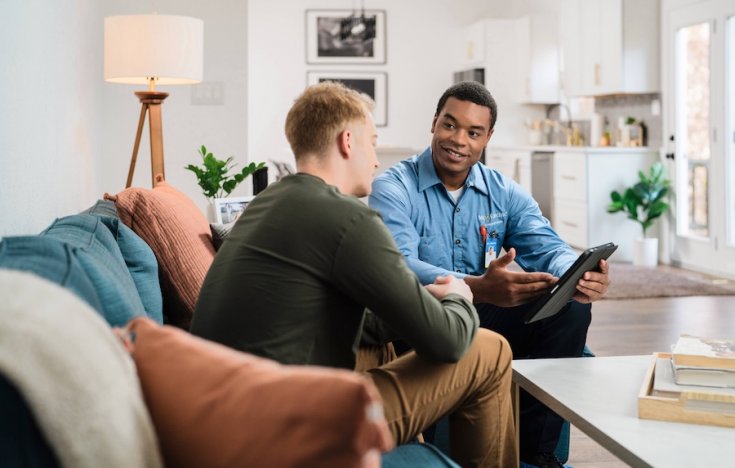Electrical Wire Color Codes
If you have ever watched an action movie with a bomb squad tinkering with the colored electrical wires of a bomb, then you might be interested in learning about electrical wire color codes. Homes built or updated after the 1940s can expect the electrical wires behind the walls and throughout the building to follow certain color standards. This article brought to you by Mr. Electric will go over some of the functions of each wire color. Learning these color codes before getting started on electrical DIY projects is vital. If you have any hesitations or concerns, then call Mr. Electric to get in touch with a live representative or qualified electrician. We are always happy to help.
Colors and Their Functions
There are many wires that run through your electrical system. To reduce the risk of injury as well as make the job of electricians easier, the wires are color coded based on their function.
Black wires, red wires, and white wires with a black or red stripe are considered hot wires. This just means that these colored wires are the ones that transfer electricity to a device or destination. The black color is the most common and the red wires are sometimes used as the second wire in a 240-volt installation. Some people use a white wire to act as a hot wire, but these should be looped with black or red electrical tape to prevent confusion.
Blue and yellow wires are also used at hot wires, but they are typically used in an electrical conduit. For instance, these might be used as travelers for three- or four-way switches like those stair lights that have a switch upstairs and another downstairs.
White or gray wires are used as neutral wires. Don’t let this name fool you. A neutral wire still carries electricity. While the hot wires carry electricity to the device, neutral wires carry power back to the service panel. So, be CAREFUL when dealing with neutral wires just as you are careful with hot wires. They are both just as likely to shock you.
Finally, green electrical wires are the ones that connect to the grounding terminal. These wires act as a failsafe, giving electricity a place to escape into the ground if a live wire in the circuit touches metal or something conductive. Even these wires should not be considered “safe” as a fault in the system can cause green wires to be live as well.
Proceed with Caution!
Electricity is an extremely volatile element that can cause serious damage, injuries, and even fatalities. You should practice utmost mindfulness when dealing with electricity. Remember to wear safety gear including, but not limited to, safety glasses, rubber gloves, long-sleeved shirt and/or jacket, and leather work boots.
Hire A Qualified Electrician
Why worry about electrocutions and electrical fires when you can just hire an experienced electrician? If you have electrical issues, then call Mr. Electric to get in touch with a live representative. We are happy to schedule a flexible appointment or arrange an urgent dispatch as soon as possible.







